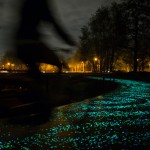Exposure Software Exposure X5
$ 119-149 | exposure.software
 |
Although we’ve reviewed both of its immediate predecessors – Alien Skin Exposure X3 and X4 – here at DPReview, I’m personally a newcomer to the long-running and retroactively-eponymous Exposure series. Since the last release, Alien Skin has changed its name to match that of its most popular and best-known app, and now goes by Exposure Software.
Exposure’s roots can be traced all the way back to a 2006-vintage film simulation plugin for Photoshop. And while it’s grown vastly across the 14 major updates launched since then, its interface should still prove fairly familiar to anyone who’s used it in at least the past five or six years since the basic UI was defined by the sixth and seventh versions.
Blazing-fast browsing and editing that won’t vanish into the ether if you don’t upgrade every year
An alternative to the likes of Adobe’s category-dominating Lightroom or Phase One’s popular Capture One, Exposure X5 stands out from its rivals thanks to its blazing-fast image browsing and editing. It also boasts a treasure trove of manual adjustments plus a vast library of quick yet professional-looking presets.
Key takeaways:
- Very competitively priced, no subscription
- Blistering performance in comparison to Lightroom
- Interface is a bit rough around the edges
- Tons of controls and presets at your fingertips
- Good high-DPI monitor support, not-so-good touch support
- Fewer profiles for automatic corrections than competitors
Not much more than a Benjamin, with no subscriptions in sight
And yet despite its depth and swiftness, it’s also extremely affordable. Without adding on any of Exposure Software’s other tools, you can get the full Exposure X5 experience for just $ 119, almost two-thirds less than a perpetual Capture One License at $ 299. And even if you add both the Snap Art and Blow Up plugins for artistic effects and easier enlargements, the pricetag still comes in below $ 150.
Adobe, meanwhile, charges you $ 120 every year for an ongoing Creative Cloud photography plan subscription. In fairness to the company, that gets you not just the Exposure X5-rivaling Lightroom but also Adobe Photoshop. But then, Exposure X5’s perpetual license doesn’t vanish into the ether if you decide not to pay for an upgrade in a year’s time.
Great upgrades to masking and lens correction
The step from the Alien Skin-developed X4 to the Exposure Software-produced X5 is very much an evolutionary one, with many features carried over unchanged. But that’s not to say there aren’t any significant changes; on the contrary, there are several upgrades that are well worth having.
The most significant changes are to be found in two main areas: Masking and lens correction. On the masking front there’s a new 3D Color Masking tool which allows you to quickly make complex layer masks based on subject hue, saturation and luminance ranges, allowing other adjustments to precisely target your intended subject.
You can profile your own cameras for better color out of the box
Exposure Software has also added tools to correct chromatic aberrations and vignetting, and extended the distortion correction tool to allow for manual corrections. You can keep aberrations on an even tighter leash with a new Defringe tool, and you can profile your own cameras for better color out of the box.
Also new to your toolbox are more presets than ever before, as well as support for more camera and lens profiles. Exposure X5 also gains greyscale TIFF and JPEG support, new horizontal / vertical flip controls and an undockable, resizeable tone curve editor.
Take a look at all 500+ presets at your disposal over at Exposure’s site.
 |
| Browsing images in Exposure X5 in the default view. Click through for the full version. |
A bit rough around the edges compared to Lightroom
There’s really no escaping the fact that right out of the box, Exposure X5 looks a whole lot like its dominant arch-rival, Adobe Lightroom Classic. Your chosen image or folder of images sit front and center between two columns of informational displays and controls.
If viewing a single image, thumbnails of others from its folder or collection sit beneath. And all panels but the centermost area can be hidden, individually or as a group, to help you focus on the images themselves.
But there are also some important differences for the Lightroom user to consider. Firstly, Adobe’s app has a modal interface, with sections appearing or disappearing from the sidebars as you switch from, say, the Library to Develop modules.
Exposure X5, though, has a non-modal design which means there’s a lot more to fit in those sidebars. Most of what Lightroom fits into both its Library and Develop modules is crammed into the sole interface for Exposure Software’s app, plus a truly mind-boggling number of fun and useful presets.
 |
 |
 |
 |
| A selection of some of the new presets in Exposure X5. Clockwise from top left, we start with the original image on which the other looks are based. Next is the Light and Airy – High Contrast filter, then Kodak Recording 2475, and finally Ilford PanF Plus 50 at bottom left. | |
The sidebars are jam-packed full of controls
Each sidebar is split in two vertically, with each panel in the sidebar being scrollable if needed, and a handle in the center of the divider allowing you to choose how much of the screen height to devote to each panel.
There’s less handholding in Exposure X5 than in Lightroom
I found that with so much stuff in there, I was constantly resizing panels to fit the controls I wanted on-screen, and scrolling up and down within them in search of individual controls I wanted to tweak. Right-clicking on any section header and switching to “Solo” mode helps a lot, though, simply by minimizing all but controls in any section but the one you’re currently browsing.
One other point to note is that there’s less handholding in Exposure X5 than in Lightroom. Adobe’s app can, for example, adjust white balance, most basic exposure settings and even perspective transformations automatically. Exposure, though, offers only presets whose actions are predetermined, and don’t vary significantly based upon image content.
 |
 |
 |
 |
| Clockwise from top left, the same image processed with the new Seasons – Spring, Summer, Fall and Winter presets. | |
The lack of a catalog has pros and cons
The other major difference to consider is where your adjustments are stored. Adobe’s Lightroom is based around managing a library of images, storing its processing information in a single monolithic database. Exposure X5 instead stores its processing information in sidecar files which, in the interest of tidiness, are deposited in a subfolder of that in which the processed image was found. (And if you just browse images without editing them, no sidecar is created at all.)
I was honestly a little gobsmacked by how much faster Exposure feels
One upside of this is that the sidecars – and therefore the processing information – reside in the folder right alongside the images, and so if you share a folder of images, you also share the processing information. But while backing up your Lightroom catalogs is just a matter of backing up a single folder’s contents, if you want to do the same in Exposure X5 you’re faced with tens or hundreds of thousands of files scattered in folders among your photos.
Articles: Digital Photography Review (dpreview.com)


































You must be logged in to post a comment.